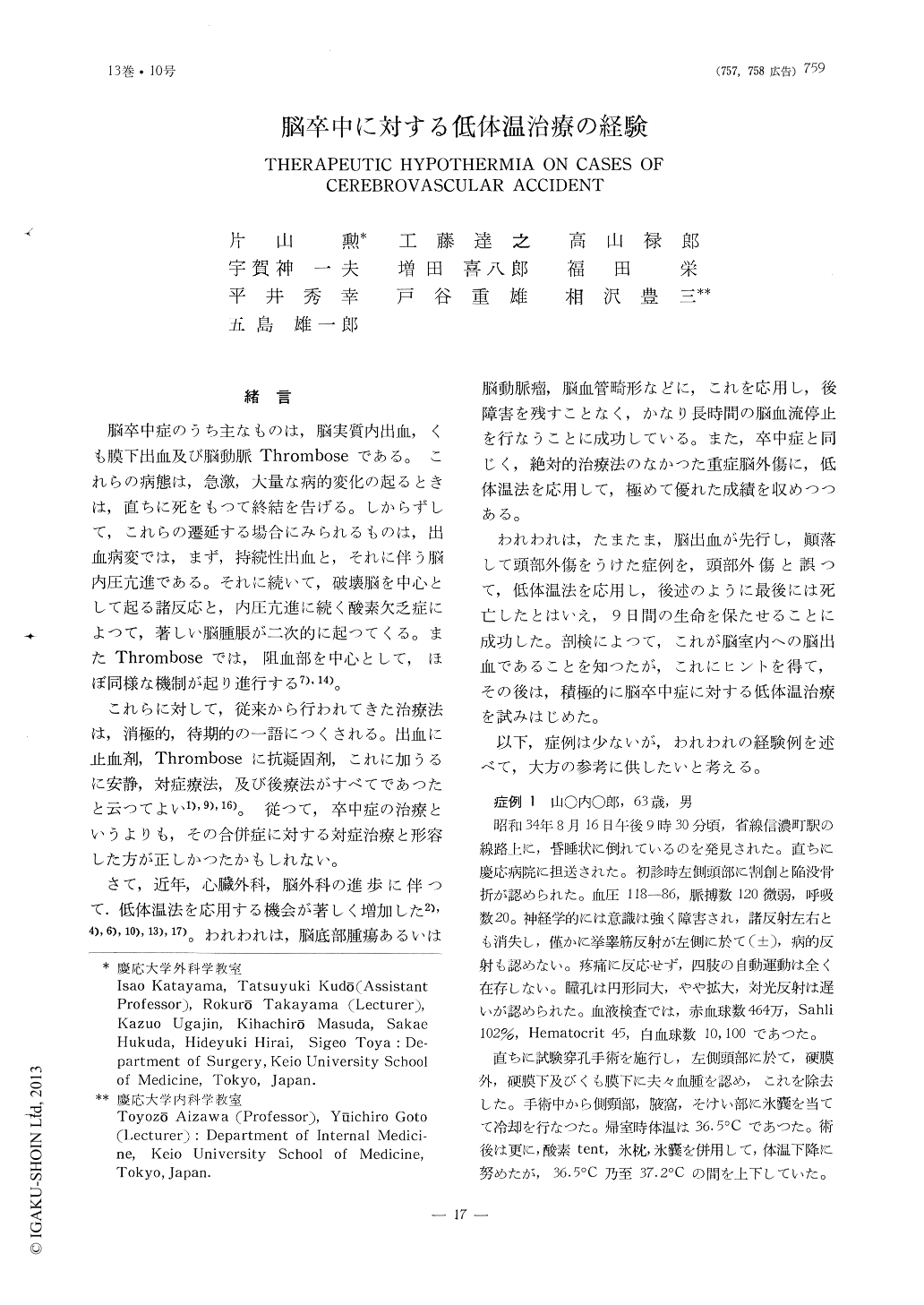Japanese
English
- 有料閲覧
- Abstract 文献概要
- 1ページ目 Look Inside
緒言
脳卒中症のうち主なものは,脳実質内出血,くも膜下出血及び脳動脈Thromboseである。これらの病態は,急激,大量な病的変化の起るときは,直ちに死をもつて終結を告げる。しからずして,これらの遷延する場合にみられるものは,出血病変では,まず,持続性出血と,それに伴う脳内圧亢進である。それに続いて,破壊脳を中心として起る諸反応と,内圧亢進に続く酸素欠乏症によつて,著しい脳腫脹が二次的に起つてくる。またThromboseでは,阻血部を中心として,ほぼ同様な機制が起り進行する7),14)。
これらに対して,従来から行われてきた治療法は,消極的,待期的の一語につくされる。出血に止血剤,Thromboseに抗凝固剤,これに加うるに安静,対症療法,及び後療法がすべてであつたと云つてよい1),9),16)。従つて,卒中症の治療というよりも,その合併症に対する対症治療と形容した方が正しかつたかもしれない。
Therapeutic hypothermia was applied on three cases of severe cerebrovascular accident, and they survived considerably longer than they would do otherwise. One was a case of massive cerebral hemorrhage, diffusely both in the cerebral substance and lateral ventric-le, and the other two were cases of cerebral infarction due to thrombosis of the basilar artery. Under hypothermia they showed some improvement in the course, but all of them died in the end.
We consider therapeutic hypothermia, thou-gh new and little experienced in this field yet, to be most reasonable and reliable tool in the treatment of cerebrovascular accident.

Copyright © 1961, Igaku-Shoin Ltd. All rights reserved.


